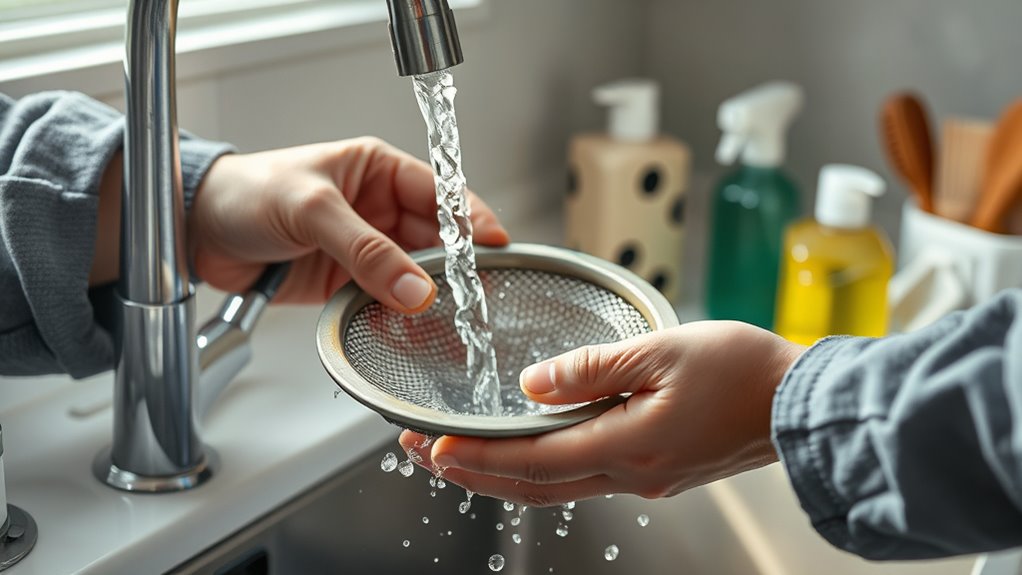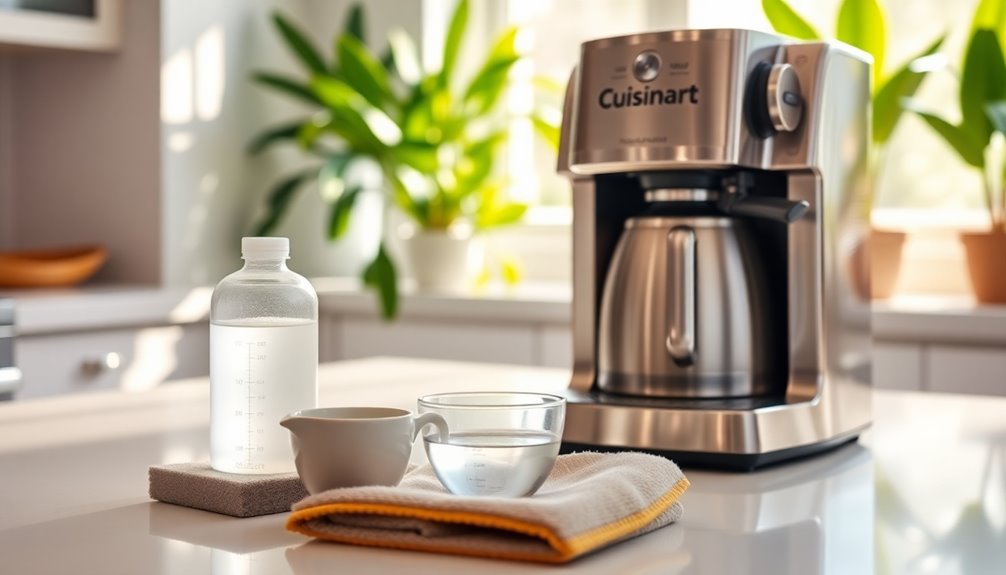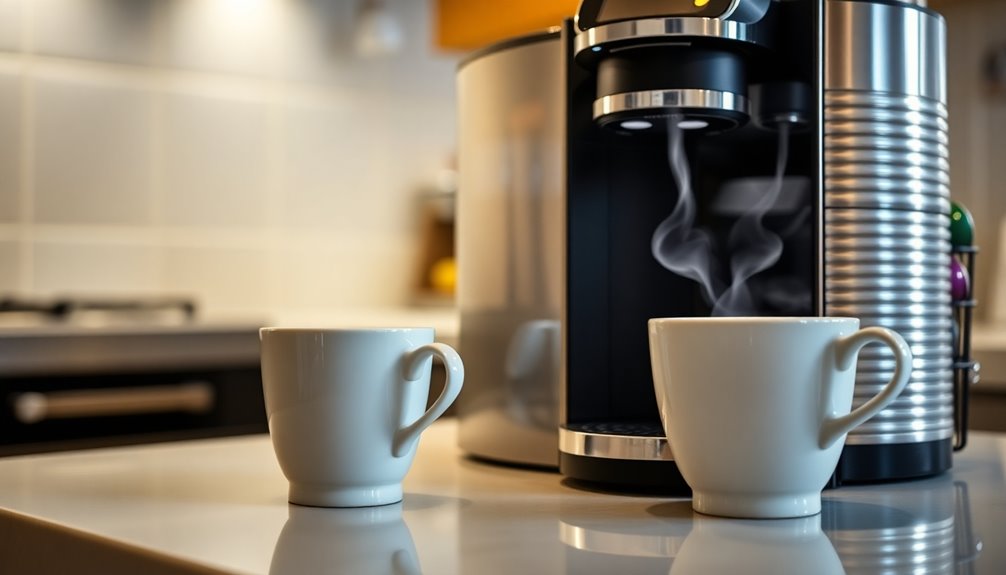To improve filter rinsing on a budget, start by rinsing your filters regularly with clean, running water using gentle pressure. Use a soft brush to dislodge debris, and soak filters in a vinegar solution for mineral buildup instead of costly chemicals. Maintain a schedule to prevent buildup and inspect filters for damage. These simple, inexpensive steps can extend filter life and maintain water quality. Stick with these tips to discover even more effective ways to care for your filters.
Key Takeaways
- Use a soft brush and gentle water stream to clean filters effectively without costly equipment.
- Rinse filters regularly to prevent debris buildup, extending their lifespan and maintaining flow.
- Soak filters in a water-vinegar solution for mineral deposit removal, avoiding expensive chemical cleaners.
- Rinse from the clean side to push debris away, reducing damage and improving cleaning efficiency.
- Establish a consistent maintenance schedule to ensure filters stay clean and perform optimally on a budget.
Affordable Tips for Better Filter Rinsing

If you’re looking to get your filters cleaner without spending a lot, there are simple and affordable methods to improve your rinsing process. Proper filter maintenance is essential for ensuring your system functions efficiently and that water quality remains high. The key is to adopt practices that maximize cleaning power without breaking the bank.
Simple, affordable tips to improve filter cleaning and water quality without extra costs.
Start by paying attention to how often you rinse your filters. Over time, debris and buildup can clog your filter media, reducing flow and water quality. Rinsing too infrequently allows dirt to settle and compact, making it harder to remove later. Conversely, rinsing too aggressively or with harsh methods can damage the filter material. Striking a balance is vital. Regular, gentle rinses help maintain ideal flow and extend your filter’s lifespan, saving you money in the long run.
When rinsing, use the best water possible, ideally clean, running water at the appropriate temperature. Tap water is usually sufficient, but if you notice a decline in water quality, consider installing a pre-filter or using filtered water for rinsing. This can prevent mineral deposits or contaminants from accumulating on your filter media, which could compromise water quality downstream. Avoid using soaps or chemicals unless specified by the manufacturer, as these can leave residues or harm the filter material.
Another budget-friendly tip involves improving your rinsing technique. Instead of just dunking the filter in water and swirling, try gently brushing the filter media with a soft brush or using a gentle stream of water to dislodge debris. This method is more effective at removing trapped dirt without damaging delicate fibers. Be sure to rinse from the clean side to push debris away from the system rather than deeper into the filter media.
If you’re dealing with stubborn buildup, soaking the filter in a solution of water and vinegar can help break down mineral deposits and organic matter. Vinegar is inexpensive and safe for most filters when used in moderation. Soak for about 15-20 minutes, then rinse thoroughly. This simple step can greatly improve your filter’s performance and water quality without costly chemicals or replacements.
Additionally, understanding the importance of contrast ratio in your filter media can help you choose the right type for optimal performance under various lighting conditions. Keep a regular maintenance schedule. Mark your calendar to rinse filters at consistent intervals, and always inspect your filters for signs of damage or excessive wear. Proper filter maintenance isn’t just about cleanliness; it’s about ensuring the water you use is pure and safe, all while keeping costs low. By adopting these straightforward, budget-friendly practices, you’ll enhance your rinsing process, improve water quality, and extend the life of your filters.
Frequently Asked Questions
How Often Should I Rinse My Filter for Optimal Performance?
You should rinse your filter every 2 to 4 weeks, depending on your filter type and usage. Regular filter maintenance helps prevent buildup and maintains peak performance. Follow your rinsing schedule to avoid clogging or reduced efficiency. If you notice decreased water flow or quality issues, rinse your filter sooner. Consistent rinsing ensures your filter stays clean, functioning properly, and prolongs its lifespan without extra costs.
Can Homemade Solutions Replace Commercial Filter Rinsing Products?
In a flash, DIY solutions can often replace commercial filter rinsing products, but use caution. Homemade solutions, like vinegar and baking soda, act as chemical alternatives that can effectively clean filters without extra cost. However, don’t forget to research proper ratios and test small sections first. While they can be handy, some filters may require commercial products for ideal performance. Always prioritize your filter’s specific needs.
Are There Specific Rinsing Techniques for Different Filter Types?
Yes, you should use specific rinse methods tailored to your filter material. For example, rinse paper filters gently with water to avoid tearing, while mesh filters benefit from a more vigorous rinse to dislodge debris. Always adjust your rinse method based on the filter type, ensuring thorough cleaning without damaging the filter. Proper technique prolongs filter life and improves efficiency, saving you money and effort.
What Signs Indicate My Filter Needs Rinsing Immediately?
Noticeable water discoloration or slow flow signals your filter needs rinsing right away. If you see cloudy or murky water, it’s a sign of filter clogging that demands immediate attention. Additionally, if your water pressure drops or appliances start functioning poorly, it’s time to rinse your filter. Don’t ignore these indicators—prompt rinsing restores clarity, cleans contaminants, and keeps your system running smoothly and efficiently.
Is It Necessary to Replace Filters After Rinsing Frequently?
You don’t need to replace filters after rinsing frequently, as long as you maintain proper rinsing frequency. Rinsing helps extend your filter’s lifespan by removing debris without causing damage. However, if you notice signs of wear or decreased performance, it’s time to replace it. Regular rinsing keeps the filter clean and functional, ensuring peak performance without reducing its lifespan unnecessarily. Just be mindful of when replacement becomes necessary.
Conclusion
Now that you have these budget-friendly tips, imagine what better filter rinsing could do for your system. But there’s one secret step that could make all the difference—something many overlook. Want to discover it? Stay tuned, because the next move might just transform your entire rinsing routine and save you even more money. Don’t miss out on this game-changing trick—your filters will thank you, and so will your wallet.










